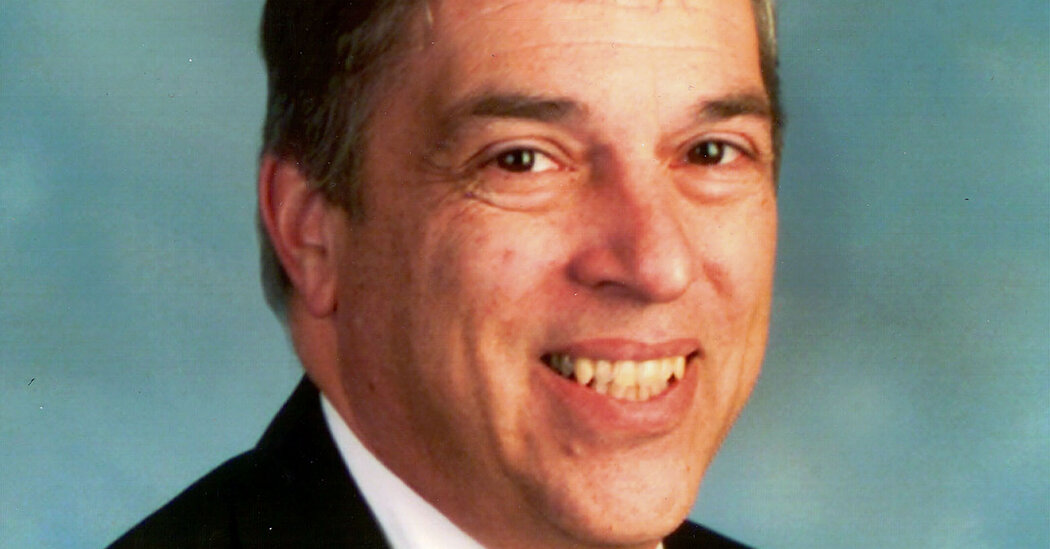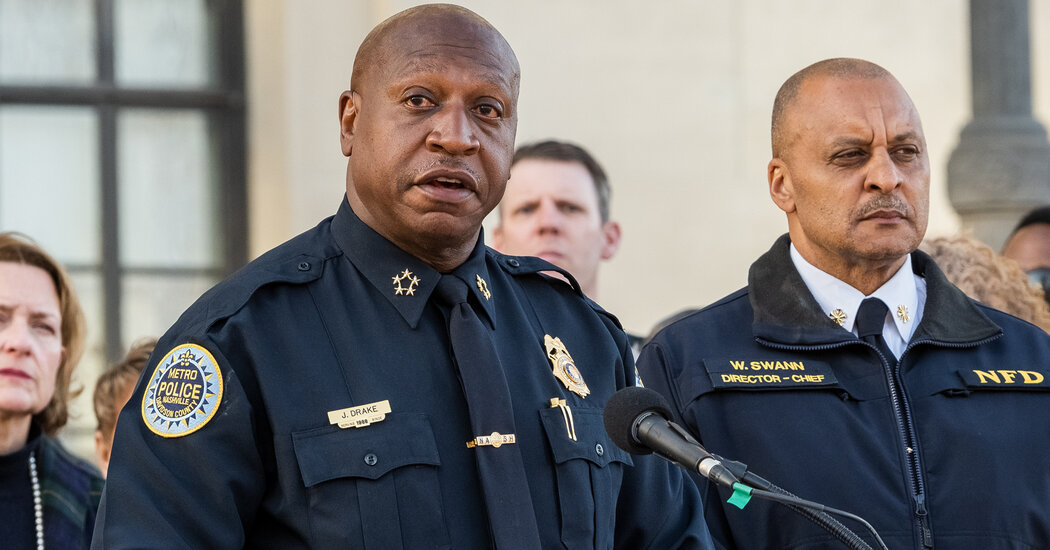At What Point Should College Athletes Be Considered Employees?
Brandon Outlaw sat on a witness stand for two days this week and described what it was like to play football at the University of Southern California.
His fingerprints were scanned when he arrived for meals at the athletes’ dining hall to make sure he was there. He received text messages from anonymous class checkers, who on occasion asked him to send photos to verify he was indeed in class. He regularly urinated into a cup before practice and handed it to a member of the training staff, who would inform him if he was properly hydrated.
After Outlaw conducted an interview with a student journalist, a coach reminded him that he had violated team policy by not clearing the interview with a school official.
Outlaw, who graduated in December 2022 with a master’s degree in entrepreneurship and innovation, detailed an existence that bore little semblance to the romantic ideal of the college athlete. Instead, he described football as occupying close to 60 hours per week during the season and requiring him — with an athletic academic counselor’s assistance — to shoehorn his classes into windows that did not conflict with his countless football-related activities, which some days started at 6 a.m.
The question at the heart of Outlaw’s testimony, at a National Labor Relations Board hearing, is a simple one that carries profound implications: Should college athletes be considered employees?
If the answer is yes, it could be the death knell for the amateurism model that has remained a bedrock of college athletics as it has evolved into a billion-dollar business, allowing schools to pour money that might have gone directly to players into coaches’ salaries, glittering facilities and ballooning staffs.
Granting athletes employee status would bolster their standing in antitrust lawsuits, and arm the highest-profile athletes, football and men’s and women’s basketball players, with the power to collectively bargain directly with universities for salaries and other rights.
The case threatens to “disrupt and transform more than 100 years of college athletics,” said Adam Abrahms, a lawyer representing U.S.C., which, along with the Pac-12 Conference and the N.C.A.A., is a defendant.
Such disruption would be welcomed, said Ramogi Huma, the executive director of the National College Players Association, an athlete advocacy group. Earlier this year, Huma filed the complaint with the N.L.R.B. on behalf of U.S.C.’s football and men’s and women’s basketball players.
“The years of tradition we’re trying to stop is the tradition of exploitation, the tradition of double standards and the tradition of refusing to pay fair market value to employees,” Huma said Wednesday after the third day of the hearing. The proceedings are scheduled to continue in late January, when coaches and administrators may be called to testify, and conclude by the end of February. A ruling is not likely to come until later next year.
The hearing, in Los Angeles, is but one salvo in an assault against amateurism that was supercharged in 2021 by a unanimous Supreme Court decision in which Justice Brett M. Kavanaugh characterized the N.C.A.A. as a price-fixing cartel.
Players on the Dartmouth men’s basketball team have also gone before the N.L.R.B. to ask that they can be considered employees, and a lawsuit, Johnson v. the N.C.A.A., seeking to have athletes considered employees is winding its way through federal court.
Then there is a raft of antitrust suits, including House v. N.C.A.A., a class-action grievance asking for $1.4 billion in damages (which the court could triple) for athletes in the top conferences. The athletes in that case argue that the N.C.A.A.’s previous restrictions on name, image and likeness rights unfairly deprived them from a share of television and social media revenue.
These challenges have prompted the N.C.A.A. to repeatedly ask for an antitrust exemption from Congress, where they have seldom found a sympathetic ear.
The lack of traction prompted Charlie Baker, the former Massachusetts governor in his first year as N.C.A.A. president, to suggest this month that the wealthiest athletic programs begin putting at least $30,000 annually into trust funds for at least half their athletes, an offering he hopes will get Congress to accede to narrow antitrust relief.
“We all know this is a big public issue and people have opinions about college sports,” said Daniel Nash, the lead counsel for the Pac-12. “But this is an unfair labor practice case.”
The stage in Los Angeles — far from the halls of Congress or august courtrooms with wood paneling and high ceilings — reflected that. The hearing took place in a conference room in a generic glass office building with the administrative judge, Eleanor Laws, seated in a portable box where she looked eye-to-eye across a table of more than a dozen lawyers. (About the only other people in the room were several members of the news media.)
That a case would end up before the N.L.R.B., which handles fair employment cases involving private businesses, has seemed inevitable since Jennifer Abruzzo, the board’s general counsel, invited a challenge two years ago by issuing a memo saying that the law would support classifying scholarship football players in the N.C.A.A.’s top division as employees.
The N.L.R.B. accepted Huma’s case, which has been broadened to include men’s and women’s basketball players as well as nonscholarship athletes, who are commonly referred to as walk-ons. The Pac-12 and the N.C.A.A. have been named as co-defendants so that any ruling would apply to both public and private schools that are part of those organizations.
Over the opening days, Amanda Laufer, the lead attorney for the general counsel, sought to demonstrate through the testimony of two recent former walk-on football players, Outlaw and Kohl Hollinquest, that U.S.C. exerted extraordinary control over the athletes, even ones who were not being rewarded with scholarships or earning hundreds of thousands of dollars in endorsements like Caleb Williams, the team’s Heisman Trophy-winning quarterback.
(Another subpoenaed witness did not show up for the hearing Wednesday. Laufer declined to identify the athlete, but subpoenas have been issued for other athletes.)
In addition to the fingerprint monitoring of their dining hall attendance, the class monitors, the near daily hydration and weight checks, players were required to remain in the team hotel when they were on the road unless they left with the team — even if the game was many hours away.
Laufer asked Outlaw if he could meet a friend for coffee?
“No,” Outlaw said.
Could he visit the Space Needle while the team was in Seattle?
“No,” Outlaw said.
Both players described a point system under the current head coach, Lincoln Riley, and his predecessor, Clay Helton, in which being late or missing meetings, meals, weight lifting sessions or classes would add up to punishment from the team. Outlaw testified that on Monday mornings, Riley would stand in front of the team and read a list of the previous week’s transgressions. For each one, every player would have to do one up-down, an exercise where players drop down to a push-up position then bounce back up.
Outlaw, who ran track at the University of Virginia for four years before he transferred to U.S.C. and joined the football team, said that while some workouts are considered voluntary — the N.C.A.A. has hours restrictions on team activities — players are expected to participate.
“They’d say things like, ‘No, this isn’t mandatory, you don’t have to do it,’” Outlaw said with a smile. “‘But it’s also not mandatory for us to play you in the fall.’”
This contrasted with the picture that Abrahms had illustrated of football as an extracurricular activity that is part of the “institutional fabric” of the school. Athletes “don’t come to U.S.C. with the intention of punching a clock,” he added. Abrahms sought to make the point in his cross-examination that the players had gained skills like discipline and leadership from playing football that would benefit them long after college.
Abrahms, Nash and Rick Pins, the lead counsel for the N.C.A.A., tried to draw a connection in their questioning of Outlaw and Hollinquest between the demands of college football and those of high school football, where the players also had coaches, schedules and rules to follow.
But Laufer noted that those are also characteristics of professional football.


